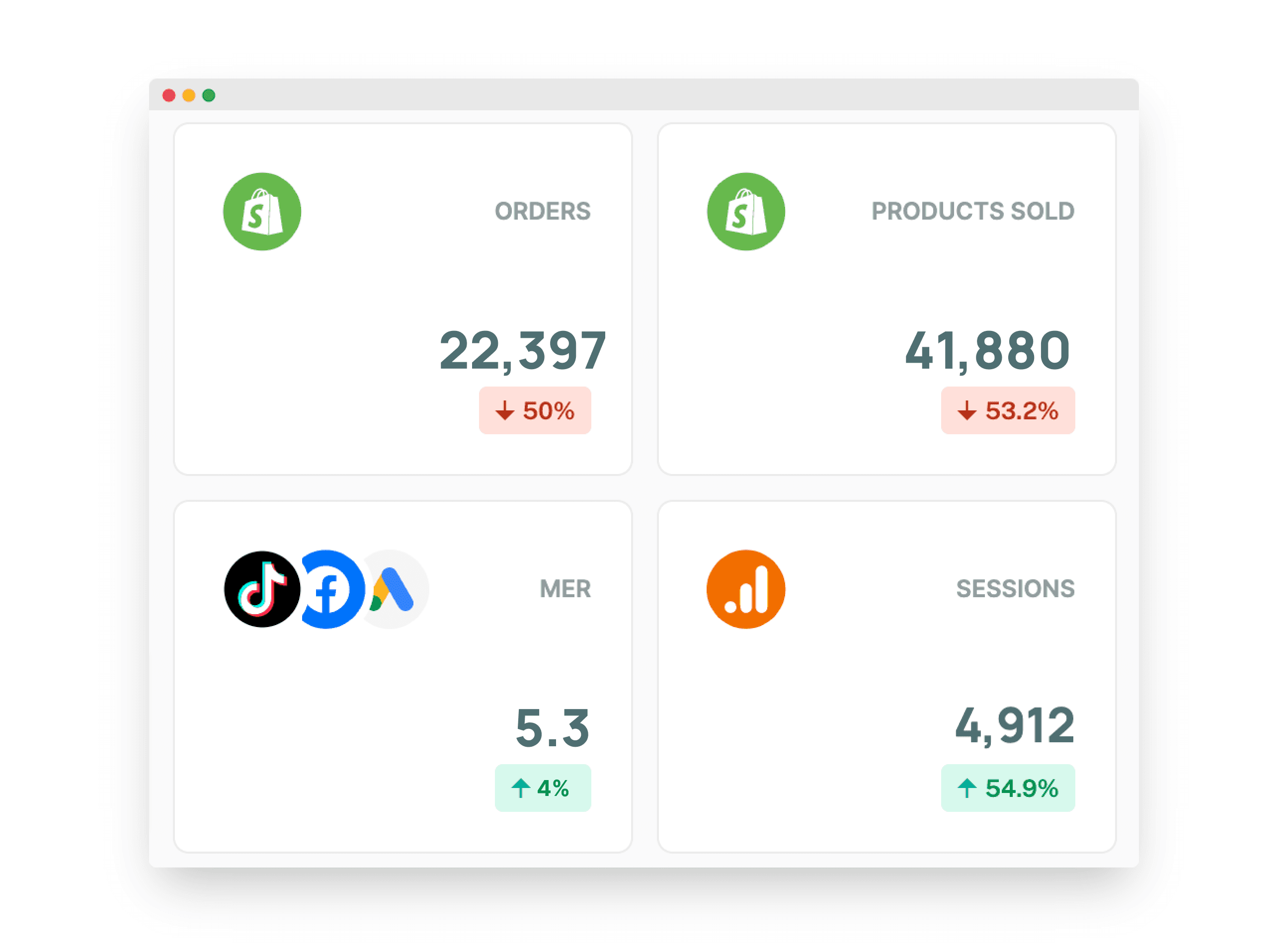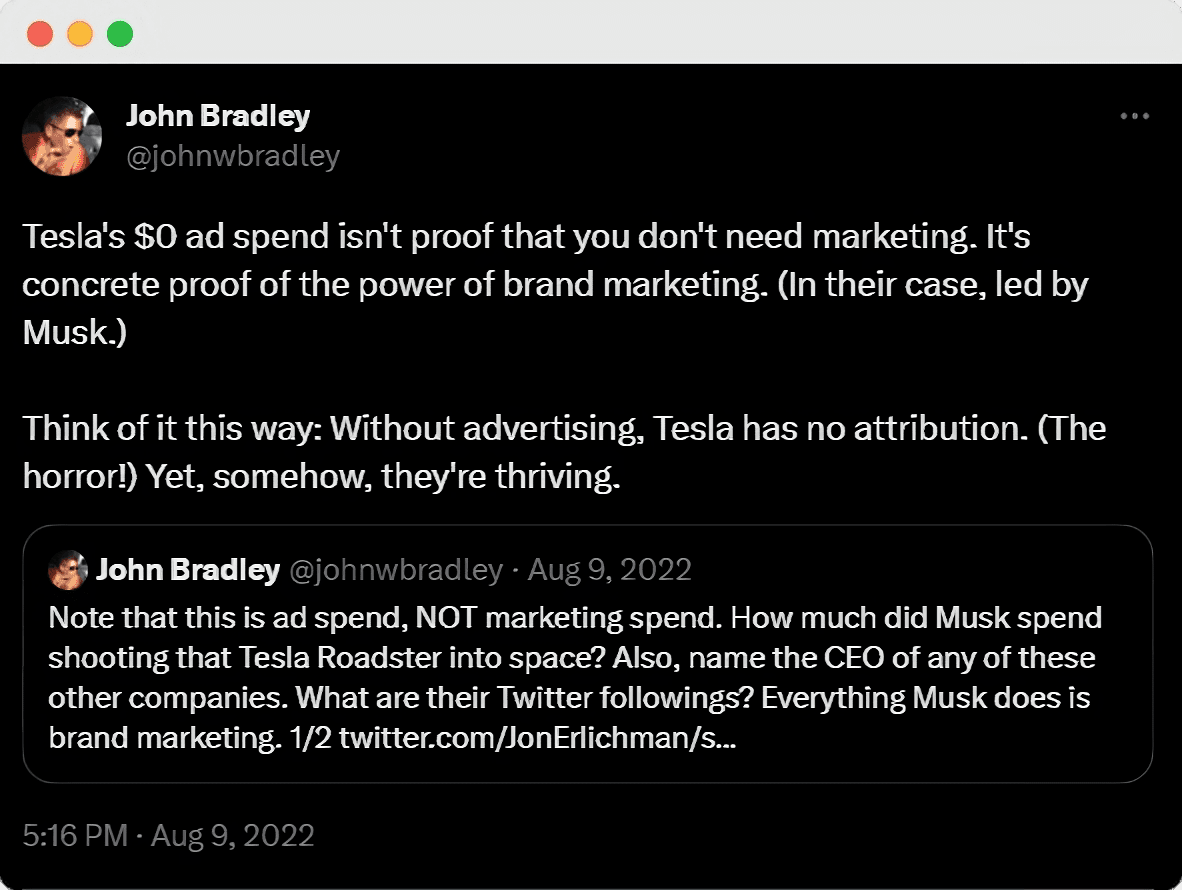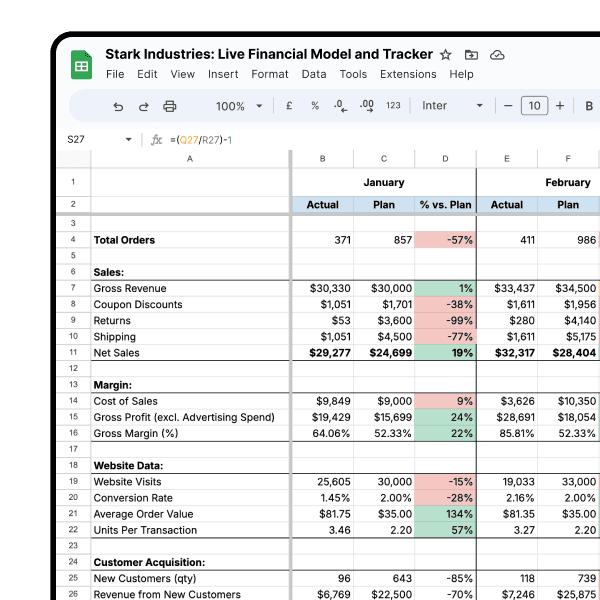Reporting & Analysis
Aug 11, 2022
TLDR
Marketing Efficiency Ratio (MER) is a crucial metric that measures the efficiency of your marketing efforts by dividing total sales by total ad spend. It differs from ROAS as it doesn't attribute sales to specific ads. MER helps set marketing budgets, allocate budgets to different activities, and measure the overall impact of marketing. You can calculate MER by dividing total sales by total advertising spend, and tools like Airboxr simplify data collection for this metric.
Marketing Efficiency Ratio measures how many marketing dollars you spend to get (say) $100 in sales. It is a great North Star Metric to determine how efficient your marketing efforts are.
Marketing Efficiency Ratio = Total Sales / Total Ad Spend
MER is not the same as ROAS (Return on Ad Spend). It simply divides all sales (regardless of the channels they came from) by the total ad spend. There is no attribution of sales to ads involved in this calculation.
MER is an important metric to track because there are many marketing activities that do not get seamlessly tracked:
You ran a radio ad and the customer typed in your store's name into their browser.
A customer found you via a Facebook Ad and signed up for your newsletter, instead of making a purchase. Then three weeks later, they decided to type in your domain name on their browser and make a purchase.
How should you use Marketing Efficiency Ratio (MER)?
There are many applications of MER, let's go over a few common ones here.
Set the right budget and goal for your marketing department.
Let's say your CEO sets the goal of $10m in sales this month. And let's say your calculations (or Airboxr!) tells you that your historical MER has been 5.3. Let's use this information to determine the marketing budget you will need to hit $10m.
$10m/5.3 = $1.9m
This means that you would need to have a budget of $1.9m to hit the sales goal.

This metric helps you identify a ballpark budget that you must ask for to deliver on the sales goal.
Allocate budgets to marketing activities based on historical MER.
Now, to hit that $10m sales target, let's see what we need to achieve and how MER helps us break down that target. If your AOV is (say) $200 and your cost per acquisition of a customer is $30, then you need:
$10m/$200 = 50,000 orders
Let's say you expect each customer to purchase only once during this period. That means you need 50,000 customers (both new and retained) during this period. At $30 per customer, you can spend $1.5m in acquiring new customers and remarketing to repeat customers.
50,000 * $30 = $1.5m
Now, our historical MER of 5.3 from the previous step gave us a budget of $1.9m to spend. Of this, we need $1.5m to spend on (ideally) performance marketing efforts. This leaves us with ~$400k of budget to spend on brand-building efforts.
Measure the holistic impact of marketing activities.
We know attribution technologies are far from perfect, and marketing teams struggle to show the impact of their brand building activities. The MER metric allows you to get a more holistic view of the impact of your marketing activities even if you can't pinpoint the exact amount of sales being delivered by your marketing activities.

Improve your DTC game. Sign up for weekly tips.
A good way to confirm that your marketing activities are leading to more sales (even if they cannot be attributed) is to look at months with low marketing spend vs. those with higher marketing spend—if the MER is in the same ballpark range, you can tell that your marketing spends are leading to a topline impact on revenues.

How to Calculate MER
The formula for calculating MER is pretty simple - you simply need to divide your Total Sales by the Total Spend on advertising ieTotal Sales / Total Advertising Spend
The trouble is, you still need to log into each of your ad channels and manually find the right data to use in the calculation.
You can download/copy the numbers directly from your Shopify store, Facebook Ads, Google Ads, and Tiktok Ads - or simply log into Airboxr. If you don't have an account yet, connect your store after signing up.


